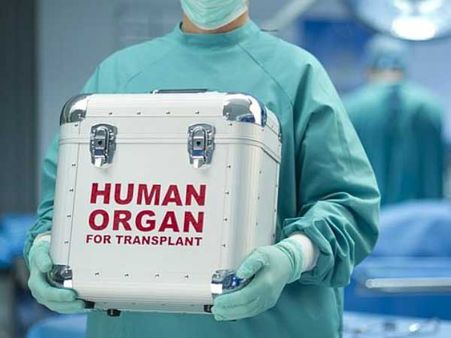Just In
- 2 hrs ago

- 2 hrs ago

- 6 hrs ago

- 7 hrs ago

Don't Miss
- Sports
 On This Day in IPL: CSK Played their First Match at Chepauk, Dhoni scored first 20th Over Six
On This Day in IPL: CSK Played their First Match at Chepauk, Dhoni scored first 20th Over Six - Finance
 Rs 2.20/Share Dividend Declared: 84-Yrs Old Small Cap Tata Co Reports 7.7% Rise In Net
Rs 2.20/Share Dividend Declared: 84-Yrs Old Small Cap Tata Co Reports 7.7% Rise In Net - Movies
 Rohit Saraf, Pashmina Roshan Starrer Ishq Vishk Rebound Delayed Again Despite Being Fully Ready
Rohit Saraf, Pashmina Roshan Starrer Ishq Vishk Rebound Delayed Again Despite Being Fully Ready - News
 Goa's Railway Renaissance: BJP's Vision Transforms Connectivity
Goa's Railway Renaissance: BJP's Vision Transforms Connectivity - Education
 Meet Naima Khatoon, First Vice Chancellor of AMU, Know Her Background and Education Qualification
Meet Naima Khatoon, First Vice Chancellor of AMU, Know Her Background and Education Qualification - Technology
 Xiaomi Robot Vacuum Cleaner S10, Handheld Garment Steamer, and Redmi Buds 5A Launched in India
Xiaomi Robot Vacuum Cleaner S10, Handheld Garment Steamer, and Redmi Buds 5A Launched in India - Automobiles
 Nissan Magnite Achieves 1 Lakh Unit Sales Milestone: Consistency Helps
Nissan Magnite Achieves 1 Lakh Unit Sales Milestone: Consistency Helps - Travel
Kurnool's Hidden Gems: A Guide To Exploring India's Lesser-Known Treasures
Chagas Disease: Causes, Symptoms, Risk Factors, Treatment And Prevention
Chagas diseases (CD) is a silent yet life-threatening disease caused by a protozoan parasite named Trypanosoma cruzi (T.cruzi). The disease is also known as American trypanosomiasis as it is found mainly in rural areas of America where there is a lack of hygiene and poverty is widespread.

According to the World Health Organization (WHO), the CD has infected around 6-7 million people worldwide, with Latin America been on the top of it. The disease is endemic in many parts of Latin America transmitted by triatomine bugs. CD was first discovered in the year 1909 by a Brazilian physician named Carlos Ribeiro Justiniano Chagas. [1]

Causes Of Chagas Disease
Many domestic and wild animals such as opossums, rodents and monkeys of the United States are reservoirs of T.cruzi parasites. A bloodsucking insect named triatomine bug take a blood meal by feeding on these animals. In the process, the parasites from infected animals get into the body of bugs, which is then passed to their faeces or urine.
In Latin America, triatomine bugs are mainly found in the wall or roof cracks of houses. This is common in rural or suburban areas where houses are made especially with mud, palm thatch and straw. Usually, the bugs hide during the day and become active at night. They emerge from the walls during the night when humans are sleeping and bite on their exposed areas. The bugs mostly bite on people faces, the reason why triatomine bugs are also known as ‘kissing bugs'.
After the bugs bite, they defecate (poop) near the bite area. A person becomes infected when T.cruzi parasites in the bug faeces accidentally enter into the body through wounds of the bite, breaks in the skin or mucous membranes such as eyes or mouth. [2]
T.cruziparasites can also infect people through other means such as:
- Consumption of food contaminated with poop or urine of triatomine bugs.
- Blood transfusions from infected donors.
- Organ transplant from infected donors.
- To newborn babies from infected mothers.
- Laboratory accidents
Note: Breastfeeding is generally safe if the mother has a Chagas disease. However, if the mother has cracks or wounds in the nipples, it is not considered safe to breastfeed during the time. Also, the CD is not transferred through cold or flu or casual human-to-human contact with the infected person.

Symptoms Of Chagas Disease
The symptoms of CD can result from mild to moderate. They are of two types depending on the severity of the condition.
1. Acute phase: This phase lasts for around weeks or months (mainly two) and only less than 50 per cent of people develops mild symptoms. During the acute phase, the parasites usually circulate in the blood. The phase is difficult to diagnose as the symptoms are similar to other infections. Symptoms include
- Fever
- Headache
- Skin lesion
- Muscle pain
- Purplish swelling
- Loss of appetite
- Difficulty in breathing
- Fatigue
- Chest pain
- Stomach pain
- Enlarged lymph glands
- Diarrhoea
- Vomiting
If the symptoms occur during the acute phase, a person can easily be treated with medications. The problem arises when no symptoms are developed and the condition remains untreated leading to the chronic phase. [3]
2. Chronic phase: As the disease proceeds with no symptoms, the parasites can slowly attack the heart or digestive system leading to cardiac complications such as enlarged heart or cardiac arrest or gastrointestinal complications like the enlarged oesophagus. People may also suffer from some neurological problems or die suddenly in their later years due to heart failure. [4]

Risk Factors Of Chagas Disease
- Living in poor housing conditions as triatomine bugs thrive mainly in houses made with mud walls.
- Visiting areas where the disease is endemic, like in rural areas of Mexico and Central America.
- Receiving blood transfusion from an infected person.
- Receiving organ transplant from an infected person.
- Untreated CD before pregnancy.

Complications Of Chagas Disease
- Heart failure
- Enlarged heart
- Altered heart rhythm
- Megaesophagus
- Enlarged colon
- Death

Diagnosis Of Chagas Disease
When a person has mild symptoms, the CD is diagnosed by blood examination in which the blood samples are viewed under a microscope for signs of parasites. Physical examination for signs of swelling is also carried out followed by questionnaires about the residence area of the person. [5]
In some cases, antibody testing for t.cruzi parasites is also carried out. An electrocardiogram is also done to find out any abnormalities in the heart rhythm.

Treatment Of Chagas Disease
According to the WHO and CDC, antiparasitic drugs like benznidazole and nifurtimox are 100 per cent effective in treating Chagas disease. However, these medicines are more effective when given soon at the onset of symptoms or after the infection. If the drugs are given after a longer period, there are chances of diminishing of the efficacy of the drugs or adverse reactions. To mention, there's no vaccine for Chagas disease developed yet. [6]
Patients who are infected without any symptoms should also be given these antiparasitic drugs to prevent their disease progression. The drugs are not suggested for women who are pregnant or for people with existing liver, kidney or neurological diseases. For patients who have reached the chronic phase, symptomatic treatments are given to treat their cardiac or gastrointestinal problems caused due to Chagas disease.

Prevention Of Chagas Disease
- Early healthcare access to infected people or to people who reside in areas where Chagas disease is epidemic.
- The vector control method in areas where triatomine bugs are largely found.
- Spraying of insecticides in the houses and surrounding areas.
- Use of insect repellant on exposed areas of skin like faces.
- Avoid sleeping in mud or adobe houses.
- Good hygiene and cleanliness of the house.
- Use of net or insecticide-soaked nets.
- Proper screening of blood before giving it to donors.
- Proper screening of organs of the donors. Also, screening of the cell and tissue of donors.
- Screening of newborns of infected mothers.
- Early antiparasitic treatment for children and women before pregnancy.
-
 healthEris Variant: WHO Alarms New Covid Wave; Should India Be Concerned About This Pandemic
healthEris Variant: WHO Alarms New Covid Wave; Should India Be Concerned About This Pandemic -
 healthDiet Coke Declared Cancerous By WHO: 5 Important Points; What To Drink Instead
healthDiet Coke Declared Cancerous By WHO: 5 Important Points; What To Drink Instead -
 healthWorld Food Safety Day: WHO Ten Keys To Ensuring Food Safety
healthWorld Food Safety Day: WHO Ten Keys To Ensuring Food Safety -
 healthEar-Safety Habits By WHO: Did You Know Sharing Your Earphones Is A Big No-No?
healthEar-Safety Habits By WHO: Did You Know Sharing Your Earphones Is A Big No-No? -
 healthFive Cities Recognised For Public Health Achievements: Bangalore Makes The List
healthFive Cities Recognised For Public Health Achievements: Bangalore Makes The List -
 healthWHO Reports 90% Of The World's Population Is Immune To COVID
healthWHO Reports 90% Of The World's Population Is Immune To COVID -
 healthWorld Pneumonia Day 2022: History, Significance And Theme
healthWorld Pneumonia Day 2022: History, Significance And Theme -
 disorders cureWHO Publishes First-Ever List Of Fungal Pathogens: What You Should Know
disorders cureWHO Publishes First-Ever List Of Fungal Pathogens: What You Should Know -
 healthNew WHO Initiative Aims To Stop The Spread Of Malaria Vectors: What You Should Know
healthNew WHO Initiative Aims To Stop The Spread Of Malaria Vectors: What You Should Know -
 disorders cureWHO Publishes First Ebola Treatment Guideline
disorders cureWHO Publishes First Ebola Treatment Guideline -
 wellnessHealth Minister Dr Mansukh Mandaviya Addresses 75th Session Of World Health Assembly In Geneva
wellnessHealth Minister Dr Mansukh Mandaviya Addresses 75th Session Of World Health Assembly In Geneva -
 wellnessWHO Director-General Dr Tedros Ghebreyesus On Three-Day Gujarat Visit
wellnessWHO Director-General Dr Tedros Ghebreyesus On Three-Day Gujarat Visit


 Click it and Unblock the Notifications
Click it and Unblock the Notifications



